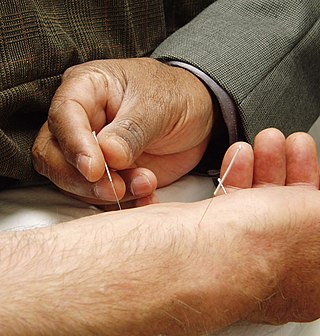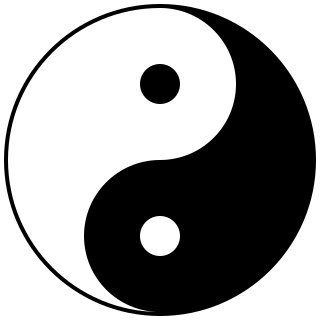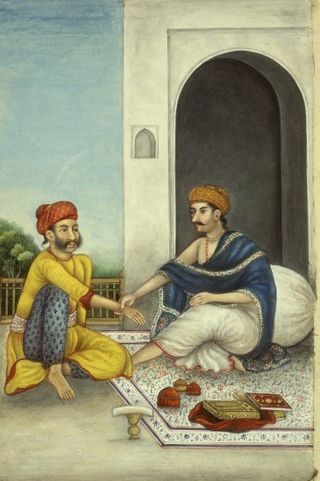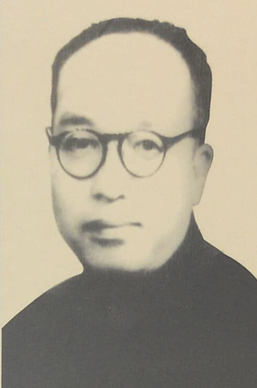
Acupuncture is a form of alternative medicine and a component of traditional Chinese medicine (TCM) in which thin needles are inserted into the body. Acupuncture is a pseudoscience; the theories and practices of TCM are not based on scientific knowledge, and it has been characterized as quackery.

Traditional Chinese medicine (TCM) is an alternative medical practice drawn from traditional medicine in China. It has been described as "fraught with pseudoscience", with the majority of its treatments having no logical mechanism of action.

Moxibustion is a traditional Chinese medicine therapy which consists of burning dried mugwort on particular points on the body. It plays an important role in the traditional medical systems of China, Japan, Korea, Vietnam, and Mongolia. Suppliers usually age the mugwort and grind it up to a fluff; practitioners burn the fluff or process it further into a cigar-shaped stick. They can use it indirectly, with acupuncture needles, or burn it on the patient's skin.

Traditional Korean medicine refers to the forms of traditional medicine practiced in Korea.

Pulse diagnosis is a diagnostic technique used in Ayurveda, traditional Chinese medicine, traditional Mongolian medicine, Siddha medicine, traditional Tibetan medicine, and Unani. Although it once showed many positive results, it no longer has scientific legitimacy, but research continues and is ill-defined in some derived text, and is subjective.

The Dongui Bogam is a Korean book compiled by the royal physician, Heo Jun and was first published in 1613 during the Joseon Dynasty of Korea. The title literally translates as "A Precious Mirror of Eastern Medicine". The phrase "Precious Mirror" is a metaphorical idiom meaning 'something which can be modeled after'. Meanwhile, the phrase "Eastern Medicine" is not the antonym to 'Western Medicine'; "Dongguk", meaning "Eastern Country," was one of the names of Korea, in reference to its geographical relation to East Asia. Therefore, the title can be rendered as "An Exemplary Explanation of Korean Medicine" and is listed in UNESCO Memory of the World as "Principles and Practice of Eastern Medicine". The book is regarded as important in traditional Korean medicine, and is one of the classics of Oriental medicine today. As of July 2009, it is on UNESCO’s Memory of the World Programme. The original edition of Dongui Bogam is currently preserved by the Korean National Library. The original was written in Hanja and only part of it was transcribed in Korean for wide reading use, as only officials understood in Hanmun. It was translated to English in 2013.
George Soulié de Morant, born 1878 in Paris, died 1955 in Paris, French scholar and diplomat. Soulié de Morant worked several years in the French diplomatic corps in China, where he served as French consul in several Chinese cities. He is mainly known for his role in introducing acupuncture in the West and for his translations of Chinese literature.
The American Academy of Acupuncture and Oriental Medicine (AAAOM) was established in 1997 in response to the encouragement of staff and faculty at the Shandong University of Traditional Chinese Medicine in Jinan, China. Classes began in 1999 in a small collection of rooms in the University Technology Center building in Dinkytown, near the University of Minnesota, United States. At that time there were about 40 full and part-time students and the school consisted of two class rooms, four treatment rooms and a small series of adjoining offices which served as reception, administration office and pharmacy. The one clinic consultation room was little more than a closet with a window and enough space for a desk and two chairs.
Blood stasis (BS) is a concept in traditional Chinese medicine (TCM), described as a slowing or pooling of the blood due to a disruption of heart qi. Blood stasis is also described by practitioners of TCM in terms of yin deficiency, qi deficiency and qi stagnation. For non-practitioners of TCM it is sometimes explained in terms of hematological disorders such as hemorrhage, congestion, thrombosis or local ischemia, and in terms of tissue changes. TCM practitioners believe it is an important underlying pathology of many disease processes despite the fact that objective, consistent methods for measuring the presence of blood stasis syndrome are not readily available. Blood stasis is associated with justifications for acupuncture and herbal treatments.
Felix Mann was a German-born acupuncturist. He devised the system known as Scientific Acupuncture and was the founder and past-president of the Medical Acupuncture Society (1959–1980). He was also the first president of the British Medical Acupuncture Society (1980), and the author of the first comprehensive English language acupuncture textbook Acupuncture: The Ancient Chinese Art of Healing first published in 1962. In 1995, he received The German Pain Prize. Mann, who was based in England, also lectured internationally on medical acupuncture. Mann distanced himself from traditional beliefs in the existence of acupuncture points and meridians.
Acupuncture in Medicine is a bi-monthly peer-reviewed medical journal covering aspects of acupuncture and related techniques. The journal was established in 1982 by the British Medical Acupuncture Society, but was published by the BMJ Group on behalf of the Society from 2008 to 2018 and SAGE Publishing from 2019. The current editor-in-chief is David Coggin-Carr.
Jaseng Hospital of Korean Medicine is a network of hospitals for non-invasive treatment of spine and joint disorders in South Korea. It was designated as a 'Spine Specialized Oriental Medical Hospital' by the Korea Ministry of Health and also designated as a 'Health Tour' hospital for foreigners by the Korean Health Industry Development Institute (KHIDI).

The American Journal of Chinese Medicine is published by World Scientific and covers topics relating to alternative medicine of all cultures, such as traditional Chinese medicine, including acupuncture. It was established in 1973 by Frederick F. Kao.

Texas Health and Science University (THSU) is a private for-profit university with its main campus Austin, Texas and a second campus in San Antonio. It offers undergraduate and graduate degrees in business, acupuncture, and traditional Chinese medicine.
The Journal of Integrative Medicine is a bimonthly peer-reviewed medical journal covering all aspects of complementary and alternative and integrative medicine. It was established in 2003 as the Journal of Chinese Integrative Medicine and obtained its current title in 2013. It is published by Science Press in collaboration with Elsevier.

Acupuncture & Electro-Therapeutics Research is a quarterly peer-reviewed medical journal covering acupuncture, electrotherapy, and related subjects. It was established in 1976 and is published by Cognizant Communication Corporation. The editor-in-chief is Yoshaiki Omura. The aim of the journal is "to make acupuncture and electro-therapeutics a universally acceptable branch of medicine."
The Journal of Acupuncture and Meridian Studies is a bimonthly medical journal covering research related to acupuncture, the meridian system, and related treatments. It was established in 2008 and is published by Elsevier on behalf of the Medical Association of Pharmacopuncture Institute. The editors-in-chief are Pan Dong Ryu and Kwang-Sup Soh. In an opinion piece for Forbes on journals about pseudoscience published by reputable publishers, Steven Salzberg listed this journal as one of the examples of a "fake medical journal", and his critique was repeated in an article written for Monthly Index of Medical Specialities exploring whether acupuncture was a medical sham or genuine treatment.
Dr. Chen Jirui was a Chinese research scientist, medical doctor and teacher. He played a key role in introducing Traditional Chinese medicine to English-language speaking medical professionals. His book Acupuncture Case Histories from China was essential reading for the California State Acupuncture Board.

Cheng Dan'an was a Chinese acupuncturist who founded the first school of acupuncture in modern China, made widespread changes to the practice, and served as chairperson of the Chinese Medical Association.
The Zhenjiu dacheng is a collection of writings on acupuncture and moxibustion. It was compiled by Ming dynasty physician Yang Jizhou and first published in 1601. The Zhenjiu dacheng was reprinted at least fifty-three times before 1911, and has been described as "the greatest comprehensive survey of acupuncture in China ever to be produced during classical times."









